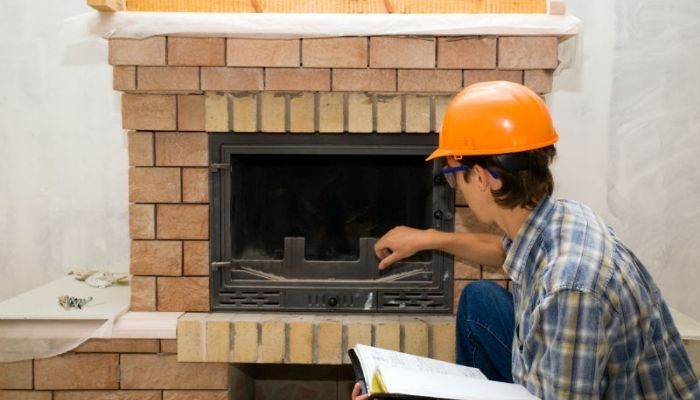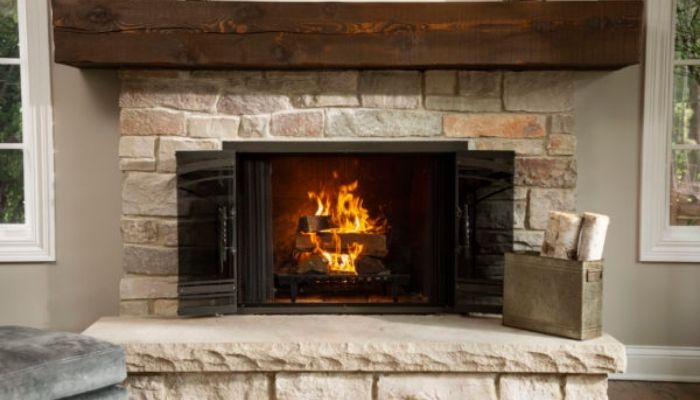Gas fireplaces have become common in many houses because of many positives. One of the good things is that you can install a gas fireplace without a chimney. All you need is a source of propane or natural gas. They can be installed in any room in the house.
With a ventless gas fireplace, you can save a lot of costs. Often, chimneys force people to remodel their homes so as to fit them. Cleaning chimneys is also quite a task.
For your safety, the fireplaces are made to burn clean. This is because the byproducts are not released to the outside. The modern safety standards require ventless gas fireplaces to have oxygen sensors. The ventless gas fireplace goes off if the oxygen levels go below the recommended levels.
Types of Gas Fireplaces
What are the types of gas fireplaces you can install in your home? There are many options available in the market. The choice depends on how the fireplace unit may fit in your home decor. The main types include;
- Direct Vent Gas Fireplaces
These types of gas fireplaces use a single opening to the exterior to draw in gas and expel combustion products. The vents can be installed both vertically and horizontally. This flexibility makes it possible for them to get installed in rooms that lack spaces for chimneys. They are best suited for new houses that are having a chimney for the first time.
The front typically contains a sealed glass. This is because the gas fireplace does not require intervention from inside the house. However, this slows down the heat transfer. Many of them come with a blower to help propagate the heat faster. Otherwise, the glass front offers a large pleasant view of the fireplace.
- Insert Gas Fireplaces
The gas inserts are meant to replace a wood-burning fireplace in a home. The gas fireplaces are installed in an existing wood fireplace box and vent through the chimney. They are available in different sizes in the market. They best suit a homeowner who does not use his wood-burning fireplace anymore.
The front viewing area is small compared to a direct vent gas fireplace. However, they are more efficient in propagating heat. Your fireplace professional should give you the best options to suit your home decor.
- Freestanding Gas Stoves
Unlike inserts, freestanding gas stoves are not meant to get installed in walls. They just need a platform of feet to stand properly. They do not require any extra finishing. The decorations of the stove can also be enjoyed from different angles.
The freestanding gas stoves may look like a traditional stove. However, nowadays there are several contemporary styles for you to choose from. They can be vented or ventless. So, a vented gas stove will have to be placed near a wall for easier venting access. Remember to keep them away from flammable house materials.
What Venting is Required for a Gas Fireplace?
There are different venting options available for gas fireplaces. They employ different technology and ideas provided the toxic combustion wastes are eliminated. These include;
- Natural Vent (B Vent)
This type of venting includes using an existing masonry chimney or a metal factory-built chimney. The combustion by-products are expelled through a single pipe in the chimney. The vent system pulls air for combustion from the inside of a house. The main advantage of this type of venting is that it does not require electricity.
- Direct Vent
The gas fireplace with direct vents uses a co-linear (dual) venting system. The outdoor air is drawn in for combustion before the combustion products are expelled through the same pipes. This also helps reduce the amount of heat loss associated with conventional chimneys.
This venting is flexible thus suiting homes that have never had a chimney before. You can vent the fireplaces through the roof or the backside of your building through the walls. The glass door should however be properly sealed to have good combustion in direct vent gas fireplaces.
- Vent-free Technology
It was once considered a controversial move to take in the fireplace industry. Through experience and tests, they have become common. The catalytic-converter technology has helped deal with products of combustion. The oxygen sensors also help keep people safe.
Gas fireplace venting requirements:
Ventless gas fireplaces do not require any form of venting. You just have to install them and you are ready to go.
A direct vent gas fireplace requires a vent pipe that will draw in air and exhaust the fumes. The glass door should also be sealed to form an enclosed system.
A natural vent gas fireplace requires an inbuilt masonry chimney or a metal chimney. The front door should not be sealed as they draw air from inside the houses.
Conclusion
Yes, a gas fireplace can be installed without a chimney. However, when choosing a ventless gas fireplace, make sure the unit meets the set standards. It should have an oxygen sensor to help you avoid collapsing in your house. Direct venting can also help vent a fireplace without the need of a chimney. Go for an option that suits the decor of your house.


